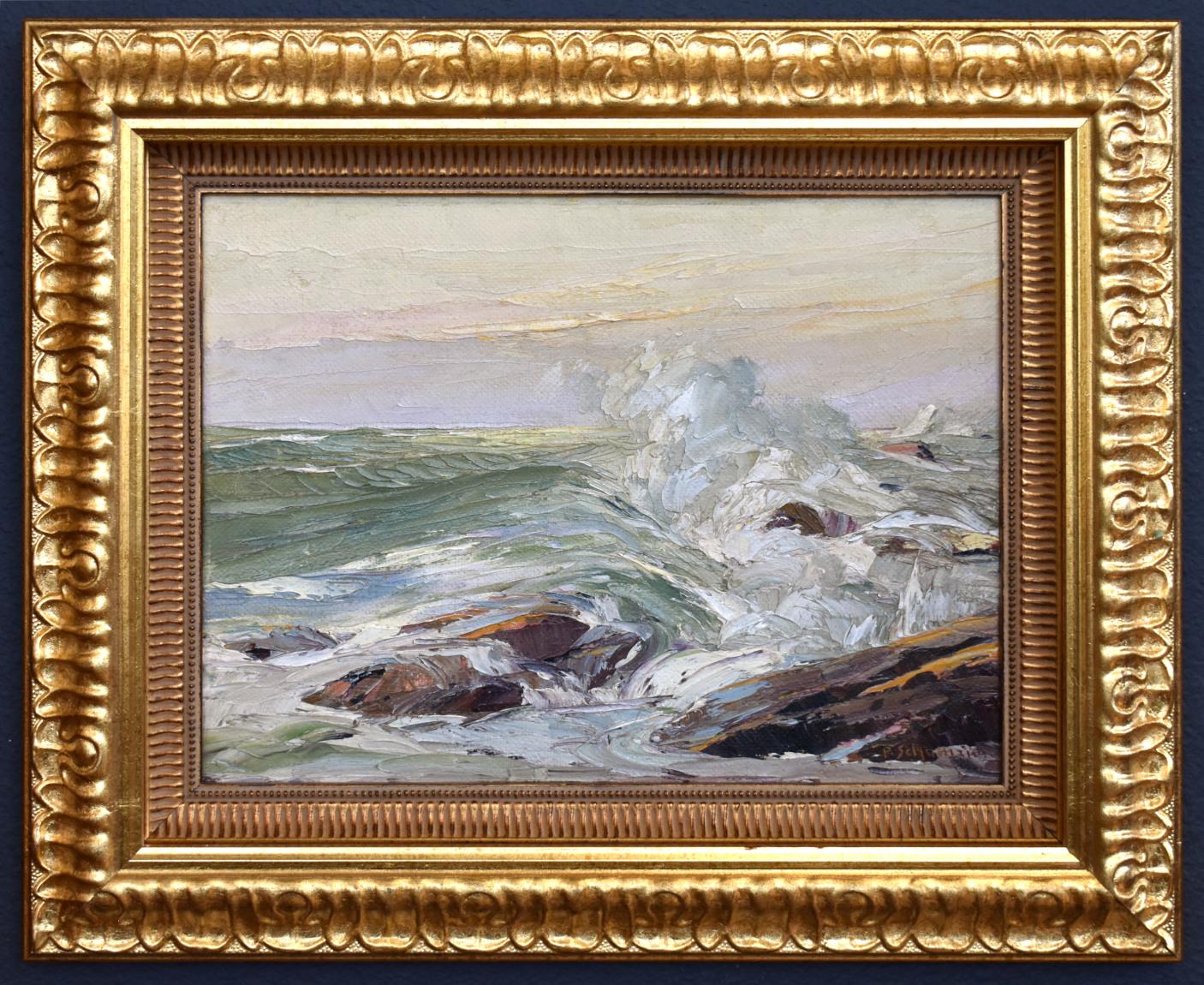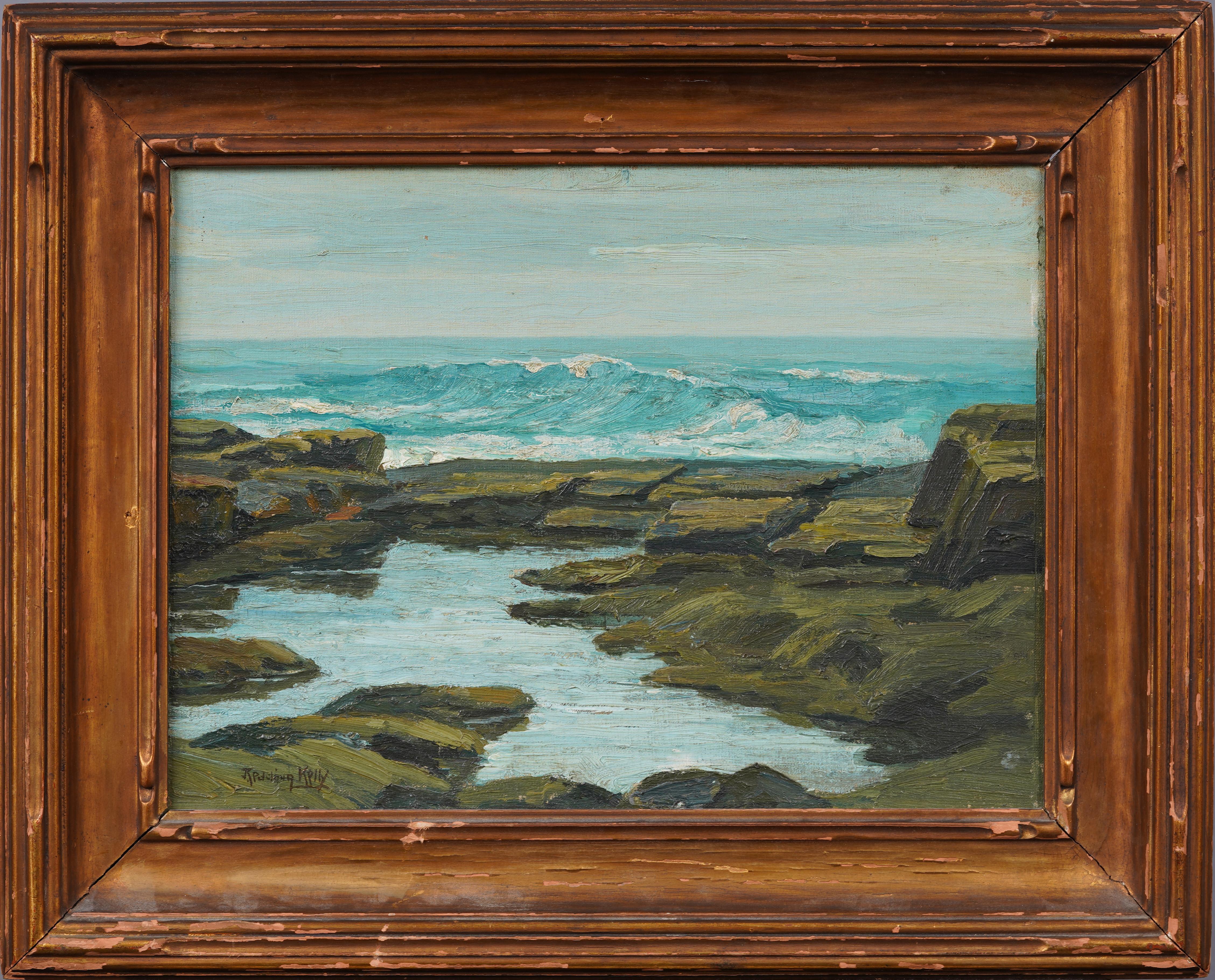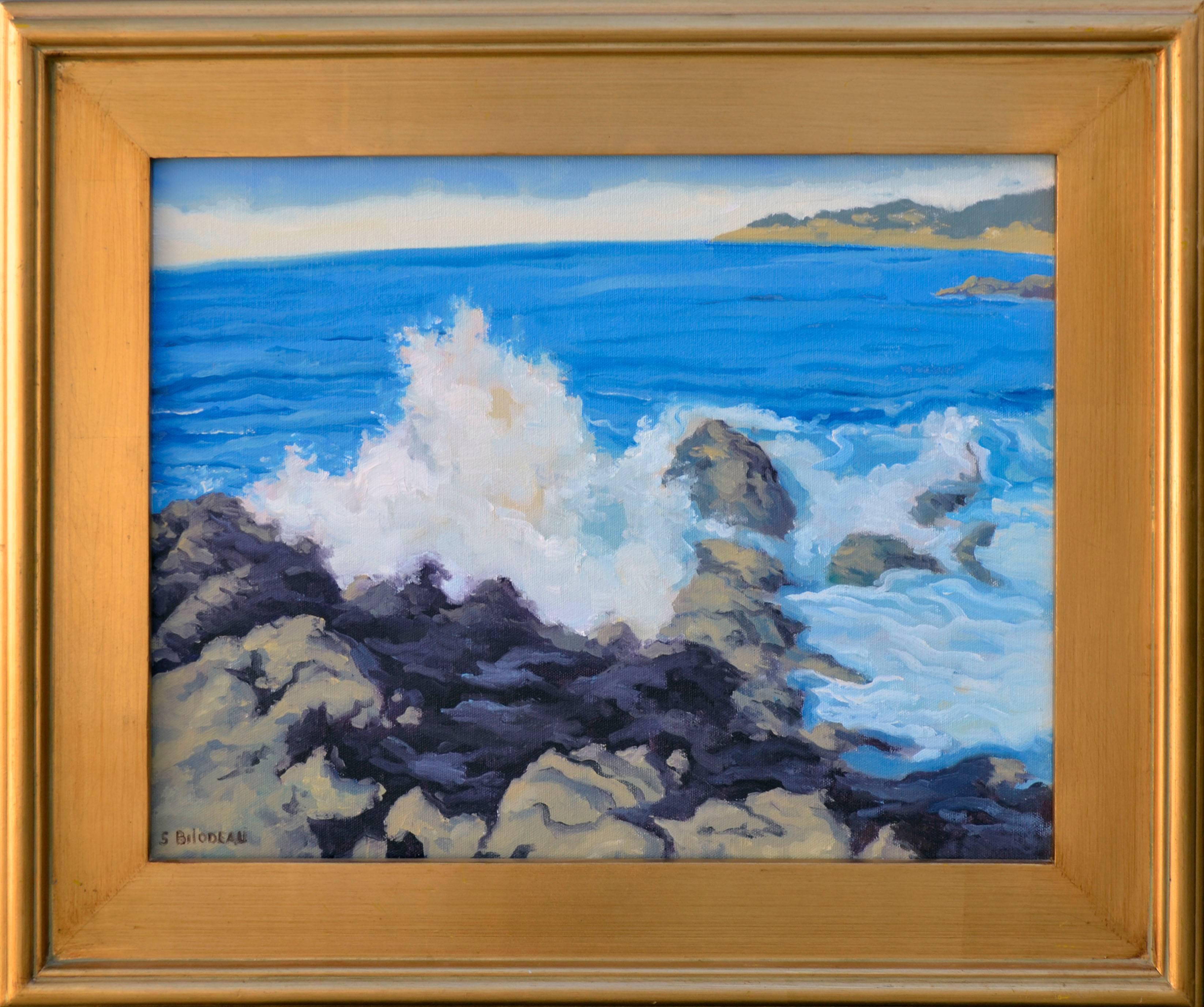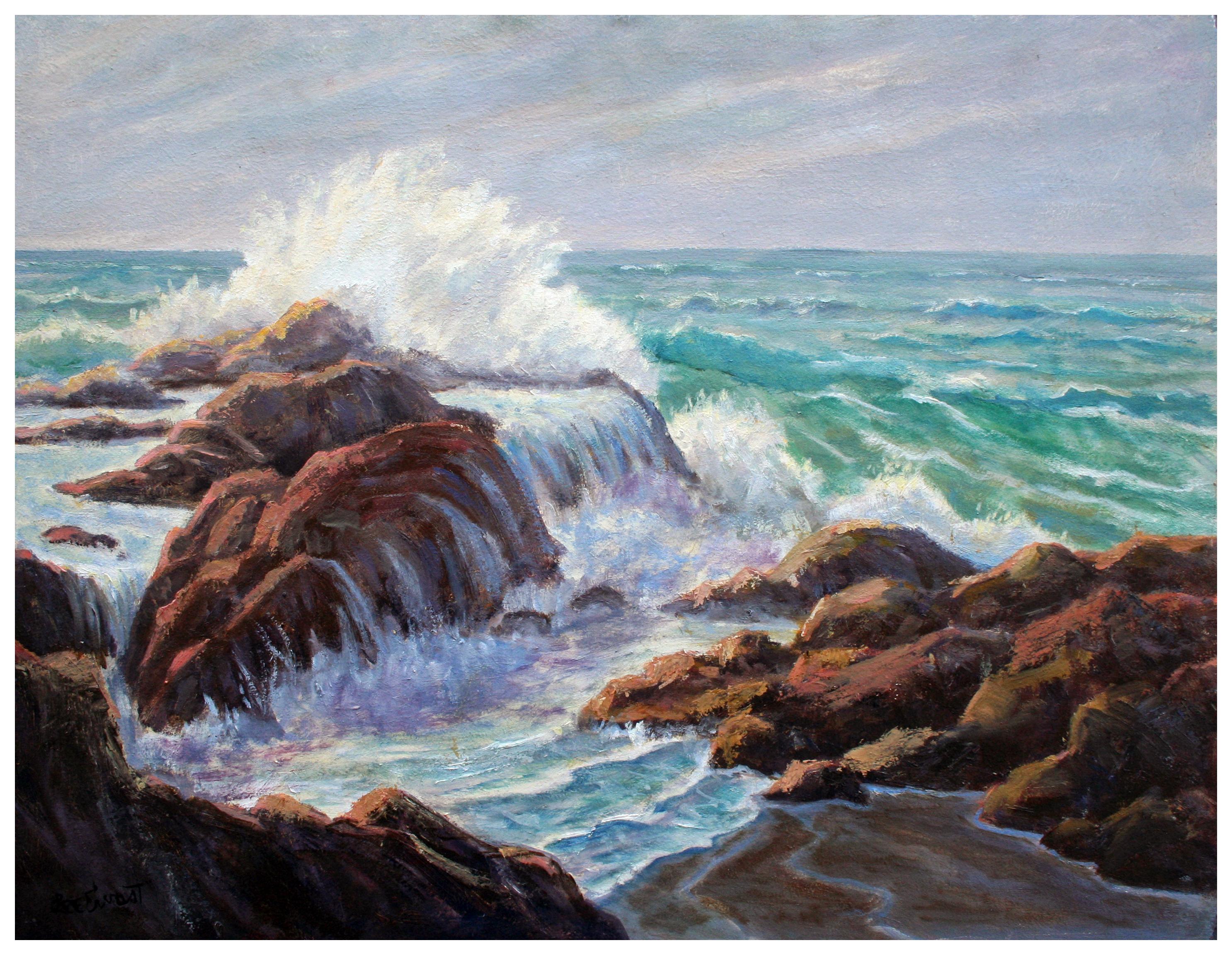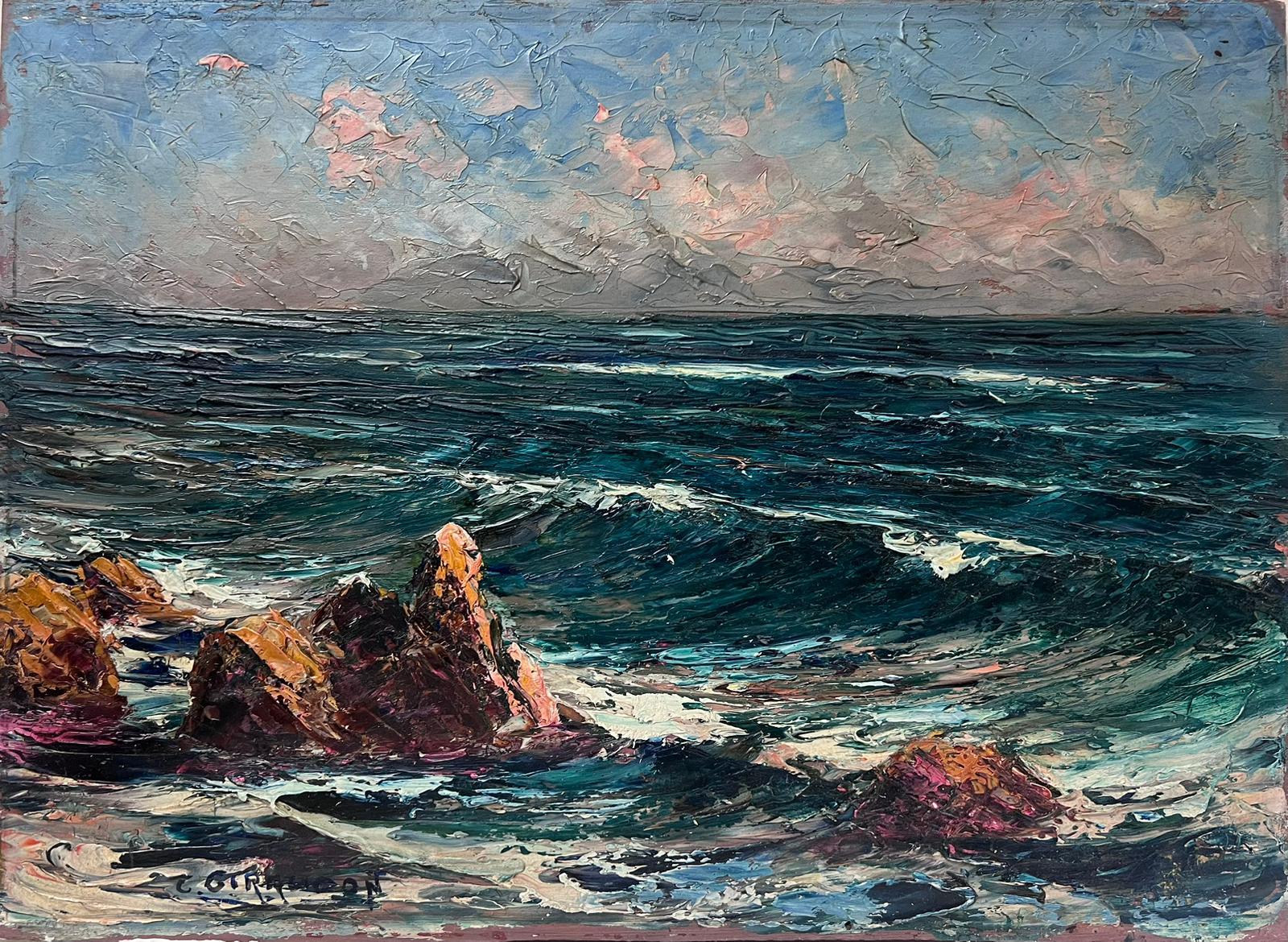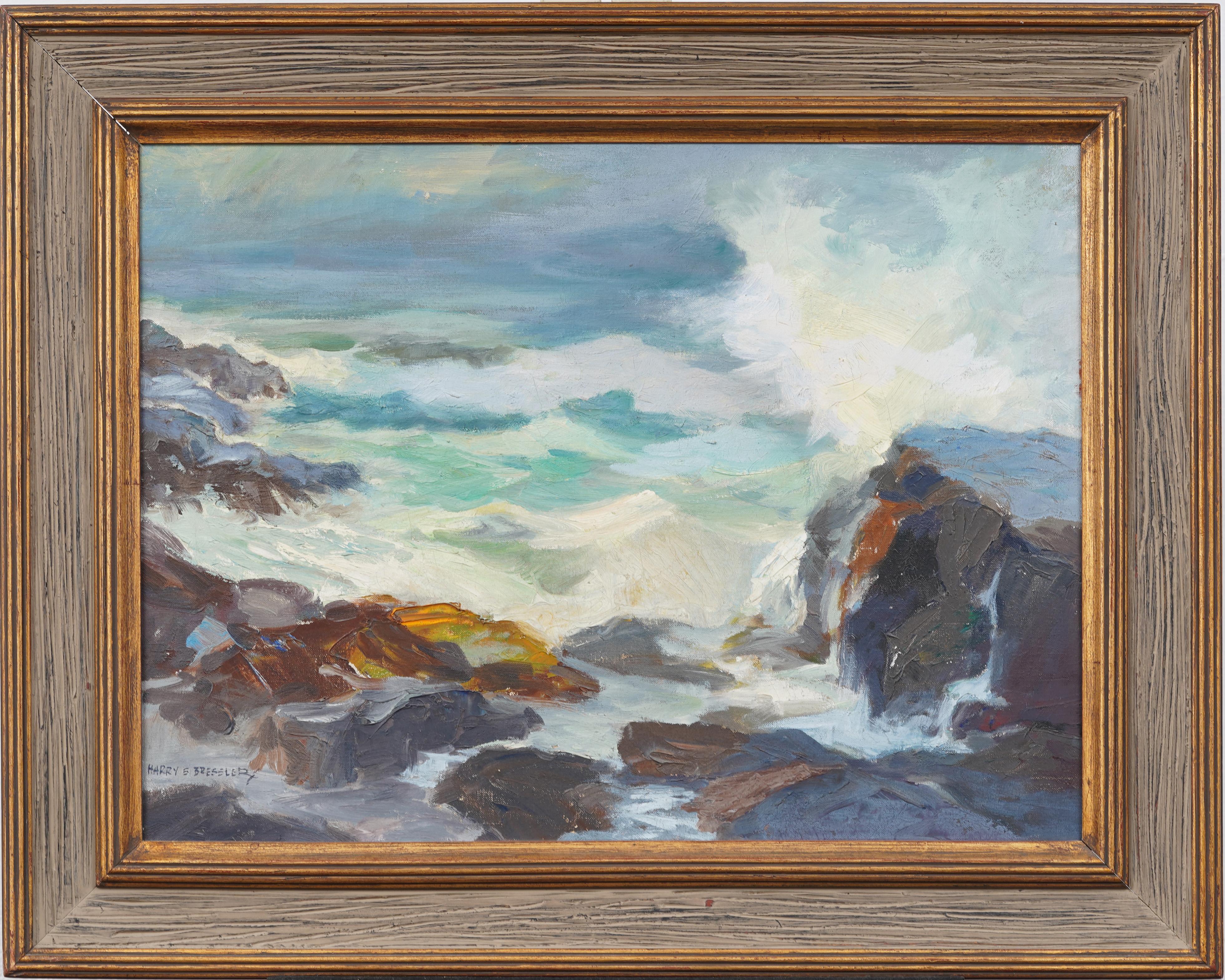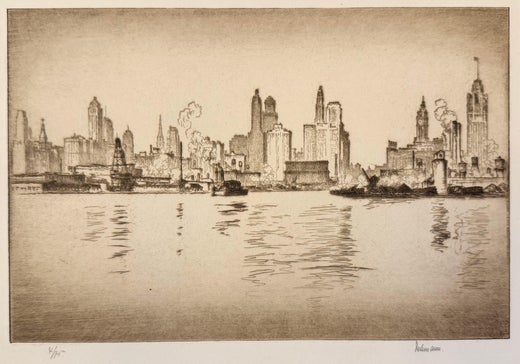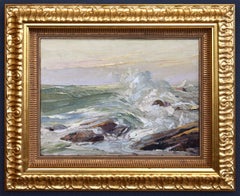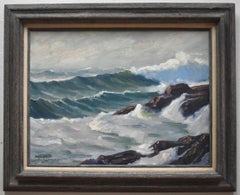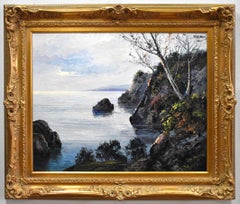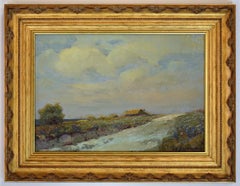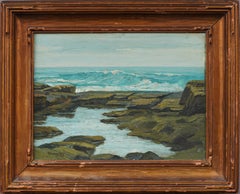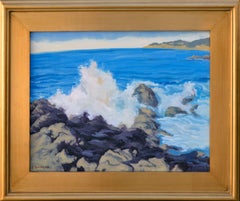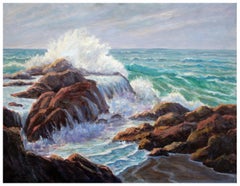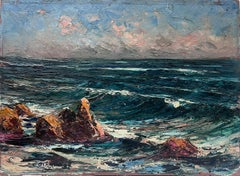Paul Schumann"Crashing Waves" Impasto Oil Painting GALVESTON TEXAS SEASCAPE OIL ON CANVASCirca 1930s
Circa 1930s
About the Item
- Creator:Paul Schumann (1876 - 1946)
- Creation Year:Circa 1930s
- Dimensions:Height: 13.75 in (34.93 cm)Width: 16.75 in (42.55 cm)Depth: 3 in (7.62 cm)
- More Editions & Sizes:Image Size: 9 x 12Price: $12,950
- Medium:
- Movement & Style:
- Period:
- Condition:Please visit my 1stdibs storefront for additional goodies. Mostly Texas but other artists and subjects as well.
- Gallery Location:San Antonio, TX
- Reference Number:1stDibs: LU76936568152
Paul Schumann
Paul R. Schumann was a Texas impressionist seascape painter, who has been called the Gulf Coast counterpart of Winslow Homer. He was born in Reichersdorf, in the German State of Saxony, in 1876, one of four children of Albert F. Schumann and Mina Clara Zincke. Only he and his brother, Albert Otto, survived infancy. The family emigrated to the United States, in 1879 and settled in Galveston, Texas, where he lived until his death. Schumann evinced an early interest in art and received encouragement from the superintendent of the Galveston Public Schools. He studied painting with local painter, Julius Stockfleth, before turning to plein air painting. He married Carolina Adela Bergmann from Fredericksburg, Texas, in 1903 and later credited her as his inspiration. They had three children, Paul August, Clara Adela and Robert Edward. Carolina died in 1937. He painted many paintings in and around Fredericksburg, as well as New Mexico. Schumann started out as a portrait and landscape painter, but became best known for his later seascapes and harbor scenes. Writers have speculated that his preference for marine subjects was influenced by a childhood experience of falling into the mill race, at his father's sawmill or by his cross-ocean journey, at the age of three. One critic wrote that he catches with unfailing dexterity, the kinship of the sea with the sky and the land,the storm clouds, the pouty, sulky thunderheads or the washed sky, after an April shower.
Schumann built model ships, for use as models for his seascapes, which sometimes featured boats and ships, ranging from fishing vessels to three-masted schooners. During the 1910s, he traveled extensively around the United States, painting in New Mexico, Arizona, Colorado, California, Illinois and along the southeastern Atlantic Coast. His favorite site remained the Texas Gulf Coast, for its tropical colors and changeable skyscapes and he became known as a leading interpreter of typical Texas skies, as well as the deeper blues of the South Atlantic and the quiet waters of the Pacific Coast.
Schumann belonged to a number of art associations, including the Art Association of New Orleans, Galveston Art League, Society of Independent Artists, Society of Texas Artists, Southern States Art League and Texas Fine Arts Association. Schumann exhibited his work frequently and over the course of his career, won many exhibition awards, prizes and medals. His work is held in the collections of a number of museums and institutions, including the Rosenberg Library (Galveston, Texas), Fort Worth Art Museum (Texas), the Panhandle-Plains Historical Museum (Texas) and Southwest Texas State University. He died of pancreatic cancer, in 1946.
Schumann began as a realist and evolved into an impressionist, likewise, moving from brush to palette knife as his primary tool. Of his painting, The Storm, he noted that he began with a brush and later used his fingers. His heavy impasto has been likened to that of Wayne Thiebaud. His palette relied heavily on the primary colors and he worked mainly in oils, but also made watercolor, pen-and-ink and crayola studies. He frequently worked outdoors, becoming a familiar figure to local fishermen, who would sometimes shift their boats around to help out his compositions. In part, because of an impressionist technique that did not allow for a great deal of overpainting, Schumann was a prolific artist, who could turn out up to three canvases a day. He is credited with some 1500 paintings, in 25 years and was able to support his family by his painting and private teaching, even during the Depression years.
As a teacher, Schumann was said to require his students to make drawings for five years, before he would allow them to work with color. Critics have praised Schumann for the atmospheric intensity and vigor of his seascapes. One critic wrote that in American art, Mr. Schumann probably has no peer at capturing in oil dancing waters or a sailing ship on a glassy sea. The San Antonio Express admired his clearness of colors, the warm tones of the afternoon reflected sunlight and lovely transparency in the wet beach sand, all aglow from the reflections of the June skies and their billowy sunlit clouds. A French critic termed his work bold, direct and free and called Schumann himself a poet of exquisite sensibility. An American critic concluded that Schumann was doing for the Texas Gulf shores what Winslow Homer did for the Coast of Maine, arguing that if he had been painting along the New England Coast instead of the Gulf of Mexico, his marines would have been known all over the world.
- ShippingRetrieving quote...Shipping from: San Antonio, TX
- Return Policy
More From This Seller
View All20th Century Impressionist Landscape Paintings
Oil
1960s Impressionist Landscape Paintings
Oil
20th Century Impressionist Landscape Paintings
Oil
20th Century Impressionist Landscape Paintings
Oil
1950s Impressionist Landscape Paintings
Oil
1970s Impressionist Landscape Paintings
Oil
You May Also Like
1890s Impressionist Landscape Paintings
Canvas, Oil
21st Century and Contemporary American Impressionist Landscape Paintings
Canvas, Oil
1960s American Impressionist Landscape Paintings
Masonite, Oil
Early 20th Century Impressionist Landscape Paintings
Oil
1940s Impressionist Landscape Paintings
Canvas, Oil
Mid-20th Century American Impressionist Landscape Paintings
Canvas, Oil
